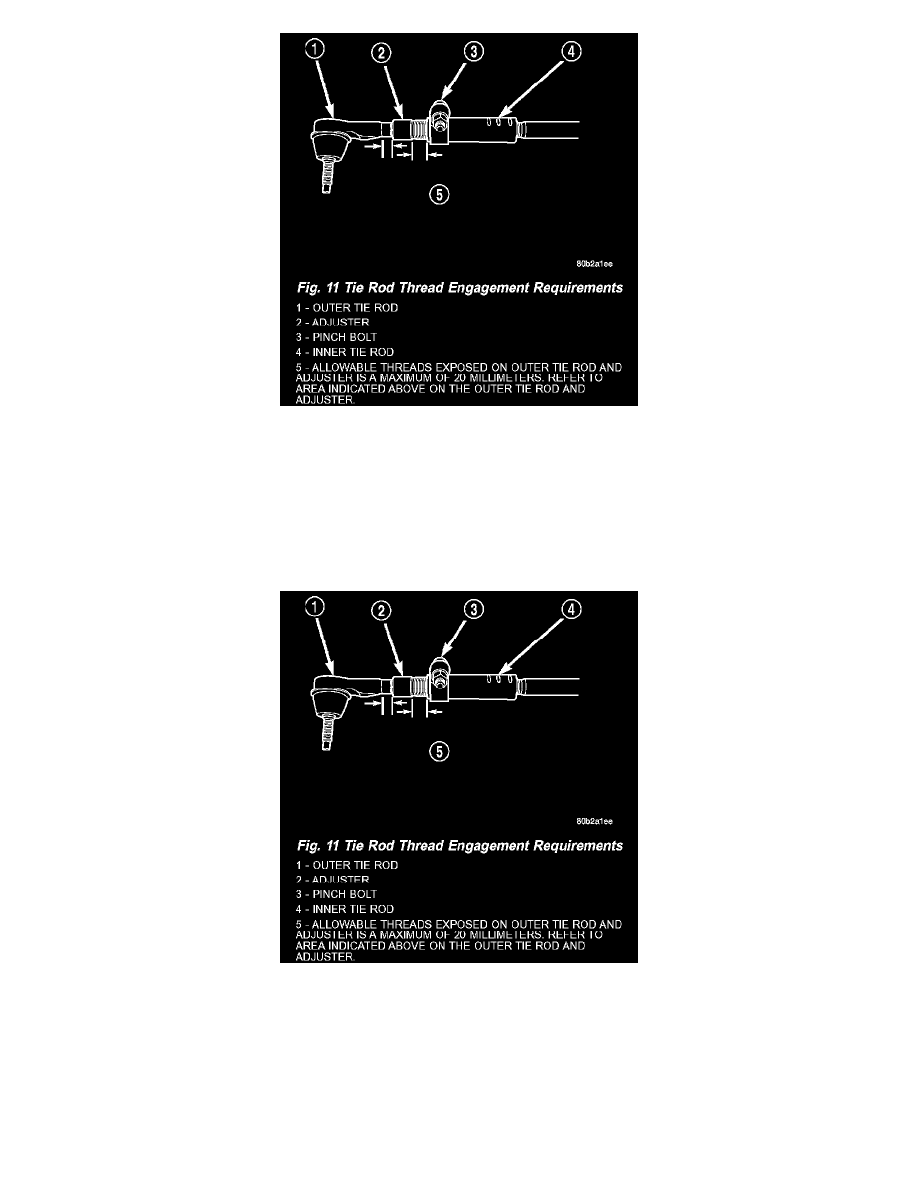Intrepid V6-2.7L VIN R (2003)

CAUTION:
-
When setting toe on vehicle, the maximum dimension of exposed threads allowed on inner and outer tie rod cannot exceed the distance shown.
If the maximum distance is exceeded, inadequate retention of either inner or outer tie rod may result. Ensure that adjustment pinch bolt is
torqued to required specification when Toe setting procedure is completed.
-
When torquing adjustment pinch bolt, the procedure must be followed to ensure adequate retention of the adjustment sleeve. Not following this
procedure, could result in the Toe Setting Adjustment changing and/or loosening of the inner or outer tie rod ends.
NOTE: Use an appropriate tool on neck area of outer tie rod to maintain the correct perpendicular orientation of the tie rod end stud within
the tie rod end.
3. After completion of toe adjustment procedure, tighten tie rod pinch bolt to a torque of 38 Nm (28 ft. lbs.).
1. Road test the vehicle after the initial wheel alignment has been performed. If vehicle still drifts or leads, repeat the front wheel alignment
procedure and adjust the camber to bias the cross camber setting opposite of the direction in which the vehicle has the tendency to lead. For
example, if the vehicle leads left, compensate by setting left front camber to 0.0° and right front camber up to +0.6°, allowing both sides to remain
within camber specifications. The cross camber is still at 0.6°, which is within the allowed alignment specification.
Vehicle Lead/Pull Alignment Bias
STANDARD PROCEDURE - VEHICLE LEAD/PULL ALIGNMENT BIAS
This procedure is designed to be used in conjunction with Diagnosis And Testing - Vehicle Lead/Pull.
